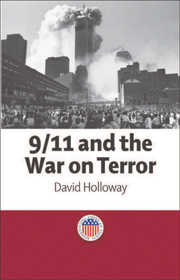Book contents
- Frontmatter
- Contents
- List of Illustrations
- Series Editors' Preface
- Acknowledgements
- Introduction
- 1 History
- 2 Politics
- 3 Mass Media
- 4 Cinema
- 5 Literature
- 6 Photography and Visual Art
- Conclusion
- Appendix A Timeline
- Appendix B Synoptic biographies
- Annotated bibliography of further reading and texts cited
- Index
Introduction
Published online by Cambridge University Press: 05 August 2013
- Frontmatter
- Contents
- List of Illustrations
- Series Editors' Preface
- Acknowledgements
- Introduction
- 1 History
- 2 Politics
- 3 Mass Media
- 4 Cinema
- 5 Literature
- 6 Photography and Visual Art
- Conclusion
- Appendix A Timeline
- Appendix B Synoptic biographies
- Annotated bibliography of further reading and texts cited
- Index
Summary
Continuity and Crisis
When Islamist insurgents hijacked four commercial airliners on September 11 2001 and crashed them into the World Trade Center in New York and the Pentagon in Washington, DC, destroying the Trade Center and killing almost 3,000 people, the attacks were widely described as a moment of historical rupture, an epochal event that drew a clear line through world history, dividing what came after 9/11 from what went before (Figures 1.1 and 1.2). Yet in many ways the feeling that everything changed on 9/11 was an illusion. Even in the United States, life for many continued much as it always had. Nor was the danger posed by al-Qaeda on 9/11 a new or surprising development. Twice in the preceding five years, first in August 1996, and again in February 1998, Osama bin Laden had issued public declarations of jihad (holy war) against the United States. In June 1996, in an attack in which bin Laden has often been implicated, the US military barracks at the Khobar Towers near Dhahran, Saudi Arabia, was blown up by a truck bomb, killing nineteen Americans and wounding hundreds more. The bombing of the US embassies in Kenya and Tanzania in August 1998, in which twelve Americans and 291 Africans died, was also carried out by al-Qaeda fighters. There were portents of worse to come. In June 1999, the US temporarily closed six of its embassies across western Africa, citing bin Laden-related threats.
- Type
- Chapter
- Information
- 9/11 and the War on Terror , pp. 1 - 6Publisher: Edinburgh University PressPrint publication year: 2008



